AWS CEO: Cloud Can Solve Economic Uncertainty, Sustainability
“There’s this uncertainty in the air. A lot of people are asking, ‘Should we slow down? Should we pause?’ No. Now’s the time to lean in harder,” says AWS CEO Adam Selipsky at AWS re:Invent 2022.
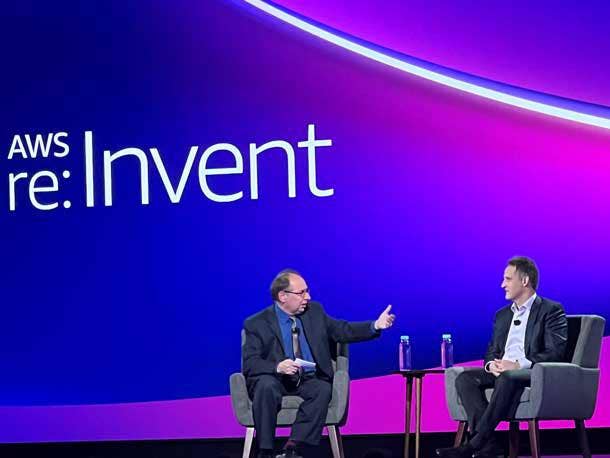
‘Now Is The Time To Lean In Harder’
Amazon Web Services CEO Adam Selipsky urged customers and partners to not slow down their cloud journey and technology innovation due to economic uncertainty ahead.
“There’s this uncertainty in the air,” said Selipsky on stage during a keynote at AWS re:Invent 2022. “A lot of people are asking, ‘Should we slow down? Should we pause?’ No. Now’s the time to lean in harder.”
“Not in spite of it, but because of the economic uncertainty, our end customers will save money when they dig into cloud versus running those applications on different types of infrastructure,” said AWS’ CEO. “Now is the time to continue to accelerate the cloud journey.”
[Related: AWS re:Invent 2022: 5 New AWS Marketplace Launches]
AWS re:Invent 2022
Selipsky spoke about what AWS partners and customers should be doing around the cloud and sustainability and gave his commitment to the channel in an interview with Steven Burke, CRN Executive Editor, News, during the Partner Keynote event at AWS re:Invent 2022.
AWS’ annual customer and partner conference saw more than 50,000 people flock to Las Vegas this week to hear about the cloud giant’s strategy and vision, receive hands-on training, and learn about new AWS product launches.
AWS’ Sustainability Push
A key topic discussed during Burke’s interview with Selipsky was AWS’ sustainability push.
At re:Invent this week, the Seattle-based worldwide cloud market-share leader pledged that it will return more water in communities than it uses in its cloud operations by 2030.
“The difference I’ve seen in the last 18 months compared to five, six, seven years ago is that the customer conversations around sustainability is day and night,” Selipsky said during his AWS Partner Keynote address. “You can see this absolutely on the rapid ascent. And I think there are going to be more and more end customers who care a lot about this.
“If you just move on to the cloud, it would be more sustainable,” he said.
Here’s what Selipsky wants customers and partners to think about when they head home from AWS re:Invent around sustainability, cloud investments, and the commitment he has made to the channel partner community for years to come.
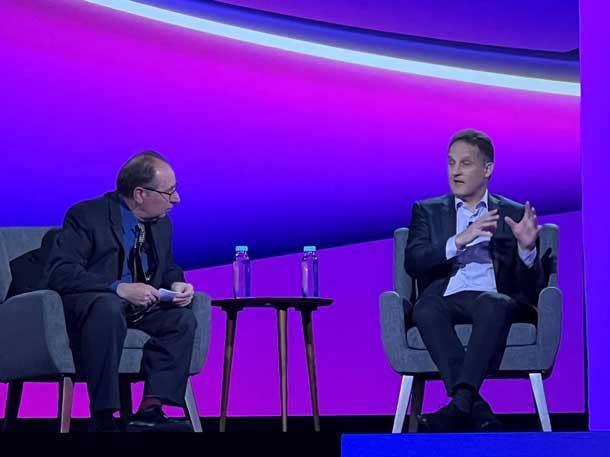
Q: What do you want customers and partners to walk away with as they continue on their cloud journeys with AWS after the announcements you made at AWS re:Invent this year?
One is it’s just an uncertain economic time. There’s a few industries which are having significant trouble right now.
There’s a lot which aren’t but are just worried. Some businesses are ‘OK’ but are still a bit worried about what’s going on.
There’s this uncertainty in the air. A lot of people are asking, ‘Should we slow down? Should we pause?’ No. Now’s the time to lean in harder.
Not in spite of it, but because of economic uncertainty, our end customers will save money when they dig into cloud versus running those applications on different types of infrastructure.
They will have more flexibility to wax and wane capacity. … You want that flexibility. And they will innovate better and they will be ready to accelerate through and be ahead of their competition when coming out the other side.
I think working together with our end customers to make sure that everybody knows that now is the time to continue to accelerate the cloud journey. So that’s definitely one thing.
Then I would say continue to innovate.
We’re all about customer obsession and innovation. I think we all share that passion as we continue to drive actual innovation and to push ourselves to really understand where customers want us to go next.
The final thing I’ll say is, remember, it’s still early days.
It honestly still is day one and we’re going to look back in 10 years and say, ‘Remember in 2022 when all we had done was A, B and C?’ So it’s still early.
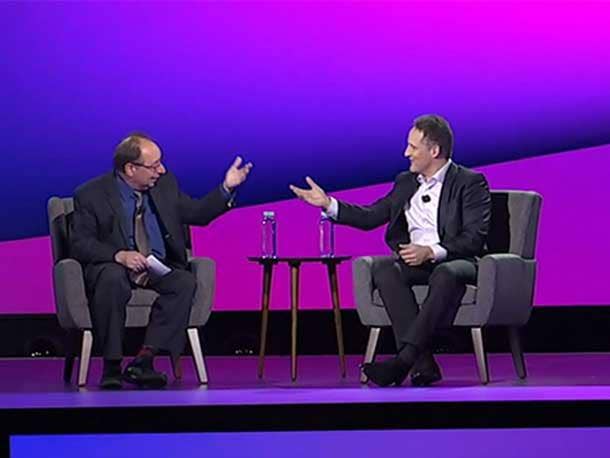
Q: What kind of demands with sustainability are you seeing from customers, and how can partners help customers on their sustainability journeys?
It’s been really interesting. So I’ve been back at AWS for about a year and a half now. The difference I’ve seen in the last 18 months compared to five, six, seven years ago is that the customer conversations around sustainability is day and night.
It was an occasional conversation about six years ago. Now it’s coming up all the time.
For example, I was in Japan a couple months ago. It was absolutely striking how 75 percent of the conversations I was having—and I’m talking about the CEOs of some of the largest corporations in Japan—that were proactively bringing up and wanting to talk about sustainability.
I was just so surprised. We care a lot about it. I know it’s becoming more important to customers.
Some of the conversations are [about] business but some are also philosophical. It’s values-based.
They’re bringing it up because they care about it and they want to know they’re working with partners who share their values and who also care about it.
So I think between AWS and all of our partner community, it’s just really important to be able to walk the walk and show what we’re doing [around] sustainability and use that to demonstrate that we do have values around that.
You can see this absolutely on the on the rapid ascent. And I think there are going to be more and more end customers who care a lot about this.
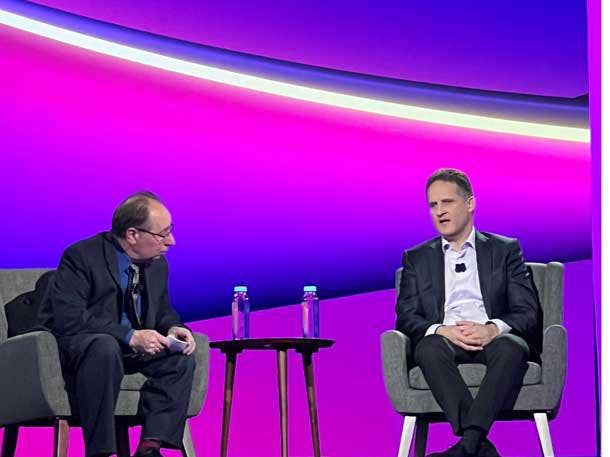
Selipsky On How Cloud Helps Solve Sustainability
Some customers just care about sustainability because, like a lot of us, they just care about their planet and are worried about it. Others are going to be regulated into it.
But it doesn’t really matter the motivation because the point is that customers are going to need sustainable supply chains. We collectively have become a very important part of their supply chains.
The quickest thing we can do for customers collectively is to get them onto the cloud.
So there are studies that have been done showing that compared to the average U.S. enterprise data center, enterprises that are running on AWS are 3.6 times more energy-efficient.
Well, you might say, ‘What about Europe? Maybe Europe is more efficient?’ No, [AWS is] 5X more efficient in Europe [compared with European data centers].
So if you just move onto the cloud, it would be more sustainable.
So of course the ISV solutions need to work with the cloud, the SIs [systems integrators] and consultants need to work with the cloud, distributors, resellers, etc. need to be helping spread the word and help customers make the move.
It’s a collective effort that’s needed, but just getting onto the cloud will make [customers] more sustainable.
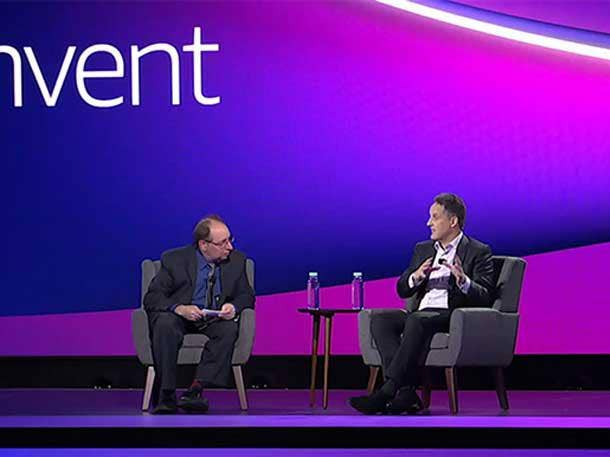
Selipsky: Customers Interested In ‘Sustainability-Related Solutions’
The next piece beyond that, we’re seeing more and more customers interested in sustainability-related solutions.
We get asked questions a lot, not just ‘How do I be more sustainable by being in the cloud?’ but ‘How can you help me understand and improve my sustainability across our business?’
So there’s a ton of partners with a ton of technical capability who are building sustainability-related solutions.
It could be a banking solution or it could be an entertainment solution, but now [customers are looking] for a sustainability solution.
I encourage a lot of you to think about sustainability-related solutions because I firmly believe there’ll be significant demand for those. And we’d love to be adding those to what we bring to customers together.
We want to be leaders here. We want to help light the way.
We also just want to inspire others to beat us. Like, be more innovative. Please, I dare you to out-innovate us. I challenge you to beat us. Show us we’re not doing enough and you can do more than us. We want to spur everybody along.
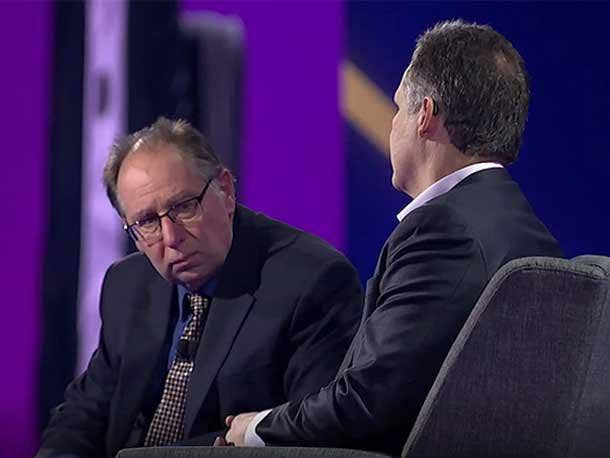
Q: As you look forward, what do you see as the key success driver for partners working with AWS?
First is just a little philosophical. Keep in mind that we are here to partner together for our end customers.
At the end of the day, 10 times out of 10, we at AWS are going to make the decisions that we think are best for the end customers.
There are so many partner opportunities for partnership, but we need partners to be taking the same mindset to understand that it’s our job to figure out how to work together to really create innovation for customers.
But more specifically, a lot of the most successful partners that we’ve seen with us really take almost a business unit view of it and are really building organizational capabilities around working with AWS and going to the field together.
Top-down leadership is really important to that.
[We need] to make sure that there’s a strong focus and the whole organization knows that they’re going to build technical capabilities, build go-to-market capabilities, and think hard about exactly what are the things that we need to build to be successful together.
You can see the results when that happens.
We’ve been really happy recently with the growing relationship with IBM Consulting, for example. We’ve really come together and we spend time at the senior leadership level together and myself—and more importantly, lots of other folks to get work done.
Also, [we are] making sure that there’s technical interoperability and strong innovation together. It’s great to see that grow.
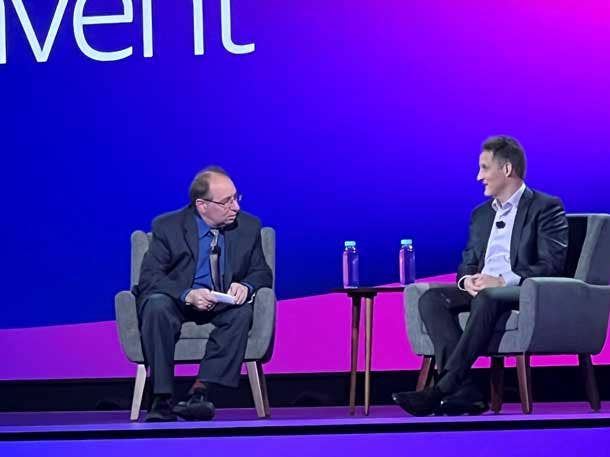
Selipsky Says Successful Partners Will Have ‘The Best Practitioners In The World’
In addition, having high levels of competence is important.
So that when our partners show up to their customers, they’re trusted and customers are glad to have them and want them back.
And the opposite is true. There’s nothing that stops us from being able to bring a partner into a customer quickly [if a different] partner showed up to a customer and did not deliver on that trust.
So training and certification become so important. It’s been great to see how many of our partners have invested deeply in training and certification.
And we’ve invested too. We’ve put tremendous resources into training the partner community. That costs a lot, quite frankly, but it’s worth it and we’re glad to do it because it’s so important for our customers.
We’re going to continue to put resources into that. I hope our partners are going to continue to reinforce that.
I think that the partners who will be most successful will actually take the long view in terms of making sure that they have the best practitioners in the world.
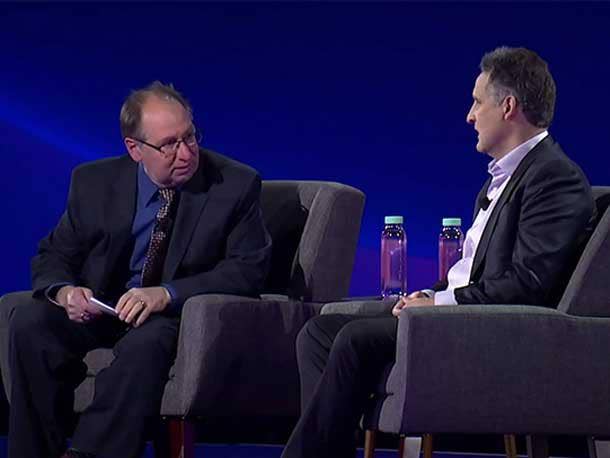
Q: Over the past 18 months, you put your own stamp on the AWS channel. As you look into the future, what is your vision for the AWS partner ecosystem?
Part of it is the same sentiment literally since day one for us, which is that partners have always been an absolutely central plank of our strategy of what AWS is trying to do.
Now we have more resources today than we had in 2006 when we launched and we’ve put more into the partner community.
But it’s really the same idea—which is that we’re going to do a lot of things ourselves, but there’s going to be a vastly larger number of things that our customers need that we won’t provide them that we’re going to have to have partners provide and we want to have partners provide. So that’s been consistent.
I think that people have really seen us walk that walk over the years. So as we grow bigger, we’ve put more and more partner resources into our system. So that’s one piece of it.
Then I think that driving innovation together is a big piece of it.
So we’re doing a lot of things where we’re building capabilities with partners or they’re building on top of us.
Deloitte Smart Factory is a great place to see almost every AWS service in motion. So that’s pretty interesting.
Just yesterday, for example, we announced the Amazon Security Lake. That is built in conjunction with a whole bunch of security-focused partners and data-focused partners, etc.
So we’ll work with Splunk on that and companies like Okta, Broadcom, etc. It’s really important to have those partnerships in place. The innovation that we’re going to drive together is an important piece of it.
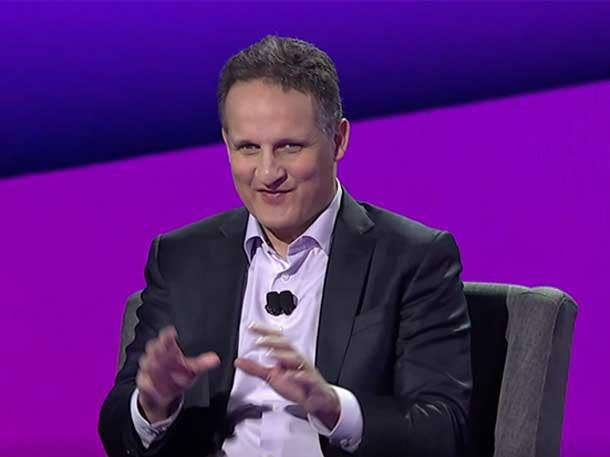
Selipsky: ‘We Are Committed To The Channel’
Another strategy is really continuing to build capabilities for partners.
Ultimately, both we and the whole partner community exist for one reason, which is to add value to customers to make their lives easier.
But we also want to enable partners and activate partners as well.
The go-to-market programs that we’ve built, we’re certainly not done, but we’ve made a lot of progress and are doing a lot more today than we used to do. We have all sorts of capabilities in terms of joint go-to-market.
I think the AWS Marketplace is a great example.
It’s come so far over the years and has just evolved so much. We’ve built technical capabilities within the past five or six years that just didn’t exist there before.
And as a result, we’ve seen a tremendous success by so many partners in different sectors selling on the AWS Marketplace.
CrowdStrike is a great example. They were there last year and the year before, so we already had a very good business on the AWS Marketplace. Yet, their business there grew over 100 percent in the last year.
So there’s a lot of opportunities there across a lot of different sectors and we’re going to continue to invest there. It’s great for our joint end customers and it’s great for our partners for us to provide that kind of exposure.
We also work together in the field. We’ve got the ISV Accelerator Program, for example, where we know how to register deals and actually incent salespeople and that type of thing. That’s been quite successful over the last few years as well.
We are committed to the channel. ... We’ll continue building the partner community. So that’ll be a constant.